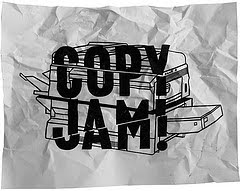Rails 3 at RailsConf 2011
A keynote by DHH kicked off Day 2 of RailsConf, where much of his talk was spent discussing new asset behavior in Rails 3.1. Here’s a run down of a few topics I found worth noting:
Asset Pipeline
DHH started by explaining how although a Rails application has lovely organization in terms of Ruby files, the assets (stylesheets, images, and JavaScripts) have become a junk drawer where junk continues to pile in. Once there’s more than a handful of files, the broken window theory applies and no one tries to maintain organization of those assets. This gets nasty, like a honey badger.
With Rails 3.1, the asset pipeline addresses the junk drawer. Assets directories (images, stylesheets, and JavaScripts) are now created in the app, lib, and vendor assets directories as they pertain to the main app, plugin dependencies, or introduce new library dependencies like a jquery calendar date select plugin. There’s also the introducton of appending to config.assets.paths, which allows you to add new directories that store these assets in arbitrary directories. The new asset pipeline allows you to store these assets in different organization, which encourages JavaScript files to be stored based on …
conference ruby rails
RailsConf 2011 — Day One
Today was the first official day of RailsConf 2011. As with most technical conferences, this one spent the first day with tutorials and workshops. For those of us without paid access to the tutorial sessions, the BohConf was a nice way to spend our first day of the four-day event.
BohConf is described as the “unconference” of RailsConf. It’s a loosely organized collection of presentations, mini-hackathons and barcamp-style meetings. I spent the first half of Monday at the BohConf. Of particular interest to me was Chris Eppstein and Scott Davis’ introduction to Sass and Compass. I’ve dabbled with Sass in the past but only recently learned of Compass.
Sass is a great way to construct your CSS without the tedious duplication that’s typical of most modern spreadsheets. Introducing programming features like variables, inheritance and nested blocks, Sass makes it easy to keep your source material concise and logical. Once your source declarations are ready, compile your production spreadsheets with Sass or Compass.
Compass is effectively a framework for easy construction and deployment of spreadsheets using Sass. To hear Scott describe it, “Compass is to Sass as Rails is to Ruby”. …
conference hosting ruby rails
DBD::Pg and the libpq COPY bug
 (image by kvanhorn)
(image by kvanhorn)
Version 2.18.1 of DBD::Pg, the Perl driver for Postgres, was just released. This was to fix a serious bug in which we were not properly clearing things out after performing a COPY. The only time the bug manifested, however, is if an asynchronous query was done immediately after a COPY finished. I discovered this while working on the new version of Bucardo. The failing code section was this (simplified):
## Prepare the source
my $srccmd = "COPY (SELECT * FROM $S.$T WHERE $pkcols IN ($pkvals)) TO STDOUT";
$fromdbh->do($srccmd);
## Prepare each target
for my $t (@$todb) {
my $tgtcmd = "COPY $S.$T FROM STDIN";
$t->{dbh}->do($tgtcmd);
}
## Pull a row from the source, and push it to each target
while ($fromdbh->pg_getcopydata($buffer) >= 0) {
for my $t (@$todb) {
$t->{dbh}->pg_putcopydata($buffer);
}
}
## Tell each target we are done with COPYing
for my $t (@$todb) {
$t->{dbh}->pg_putcopyend();
}
## Later on, run an asynchronous command on the source database
$sth{track}{$dbname}{$g} = $fromdbh->prepare($SQL, {pg_async => PG_ASYNC});
$sth{track}{$dbname}{$g}->execute();This gave the …
dbdpg open-source perl postgres
Locally served YUI3
For the vast majority of sites serving static JS and CSS files such as those required by YUI (or jQuery etc.) from a CDN makes great sense: improved performance through caching and geography, reduced load, improved uptime, leveraging some large corporations’ resources, etc.
Unfortunately as soon as you hit an SSL secured page you can’t use a CDN’s resources securely, a common thing with e-commerce sites and administration panels. In the YUI case that means doing at least a little bit of extra configuration and maintenance of an installed library base, an all-too-common task in typical server-side development that’s becoming more common as libraries are maintained for client-side usage as well.
Toss in “combo loading” and all of a sudden it feels like the software development cycle can’t just be discarded ’cause you are working on the web. Maybe this is really what they meant by Web 2.0. But I digress…
Since I’m familiar with and working on YUI3, here is how we have it working for non-CDN based serving for an administration panel developed for a newer generation of an Interchange site. Our custom application uses YUI3 (core), modules from the YUI3 Gallery, and a few modules …
javascript
Benchmarking in Perl: Map versus For Loop
Last week, I was coding in Perl for an Interchange project. I’ve been in and out of Perl and Ruby a lot lately. While I was working on the project, I came across the following bit of code and wanted to finally sit down and figure out how to use the map function in Perl on this bit of code.
my @options;
for my $obj (@$things) {
push @options, {
value => $obj->{a},
label => $obj->{b}
};
}
return \@options;I’m a big fan of Ruby’s inject method and in general a fan of the Enumerable Module, but I have a brain block when it comes to using the map method in both Perl and Ruby. I spent a little time investigating and working on a small local Perl script to test the implementation of the map method. I came up with the following:
return [ map {
{
value => $_->{a},
label => $_->{b}
}
} @$things ];After that, I wanted to make sure the code change was justified. The Interchange application that is the source of this code is built for performance, so I wanted to ensure this change didn’t hinder performance. It’s been a while since I’ve done benchmarking in Perl, so I also had to refresh my memory regarding using …
performance perl
NOTIFY vs Prepared Transactions in Postgres (the Bucardo solution)
We recently had a client use Bucardo to migrate their app from Postgres 8.2 to Postgres 9.0 with no downtime (which went great). They also were using Bucardo to replicate from the new 9.0 mater to a bunch of 9.0 slaves. This ran into problems the moment the application started, as we started seeing these messages in the logs:
ERROR: cannot PREPARE a transaction that has
executed LISTEN, UNLISTEN or NOTIFYThe problem is that the Postgres LISTEN/NOTIFY system cannot be used with prepared transactions. Bucardo uses a trigger on the source tables that issues a NOTIFY to let the main Bucardo daemon know that something has changed and needs to be replicated. However, their application was issuing a PREPARE TRANSACTION as an occasional part of its work. Thus, they would update the table, which would fire the trigger, which would send the NOTIFY. Then the application would issue the PREPARE TRANSACTION which produced the error given above. Bucardo is setup to deal with this situation; rather than using notify triggers, the Bucardo daemon can be set to look for any changes at a set interval. The steps to change Bucardo’s behavior for a given sync is simply:
$ bucardo_ctl update sync …bucardo database postgres
MySQL Integer Size Attributes
MySQL has those curious size attributes you can apply to integer data types. For example, when creating a table, you might see:
mysql> CREATE TABLE foo (
-> field_ti tinyint(1),
-> field_si smallint(2),
-> field_int int(4),
-> field_bi bigint(5)
-> );
Query OK, 0 rows affected (0.05 sec)
mysql> desc foo;
+-----------+-------------+------+-----+---------+-------+
| Field | Type | Null | Key | Default | Extra |
+-----------+-------------+------+-----+---------+-------+
| field_ti | tinyint(1) | YES | | NULL | |
| field_si | smallint(2) | YES | | NULL | |
| field_int | int(4) | YES | | NULL | |
| field_bi | bigint(5) | YES | | NULL | |
+-----------+-------------+------+-----+---------+-------+
3 rows in set (0.03 sec)
mysql>I had always assumed those size attributes were limiters, MySQL’s way of providing some sort of constraint on the integers allowed in the field. While doing some recent work for a MySQL client, I attempted to enforce the range of a tinyint according to that assumption. In reality, I only wanted a sign field, and would have liked to have …
database mysql
A Product Variant Code Challenge
A while ago, I came across a cute little Ruby challenge that looked interesting:
Given an array of arrays of possible values, enumerate all combinations that can occur, preserving order. For instance:
Given: [[1,2,3], [4,5,6], [7,8,9]], calculate the same result as the code below, but do so with an arbitrary size array:
combos = []
[1,2,3].each do |v1|
[4,5,6].each do |v2|
[7,8,9].each do |v3|
combos << [v1, v2, v3]
end
end
end
combosEntries can be written using one or more functions, and may optionally be written as a class extension (i.e. Array)….
And now some context to why I thought this was applicable to ecommerce: Let’s imagine you have a product. Then, let’s imagine that the product has variations, or variants. We’ll say we have an arbitrary size array of “option types”, each with an arbitrary number of items in the array. Here, we have option types of size, color, and printed logo, which yields multiple variations, variants or combinations of a single product:
| Size | Color | Logo |
|---|---|---|
 Large
Large |
|

|
 Medium
Medium |
|

|
 Small
Small |
 |
|
 |
And let’s give a real-life example data model, this one from a previous article on Spree’s product …
ecommerce ruby





